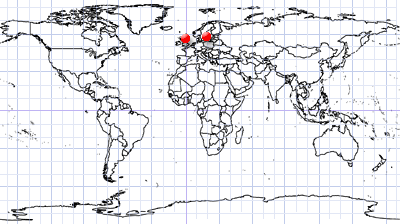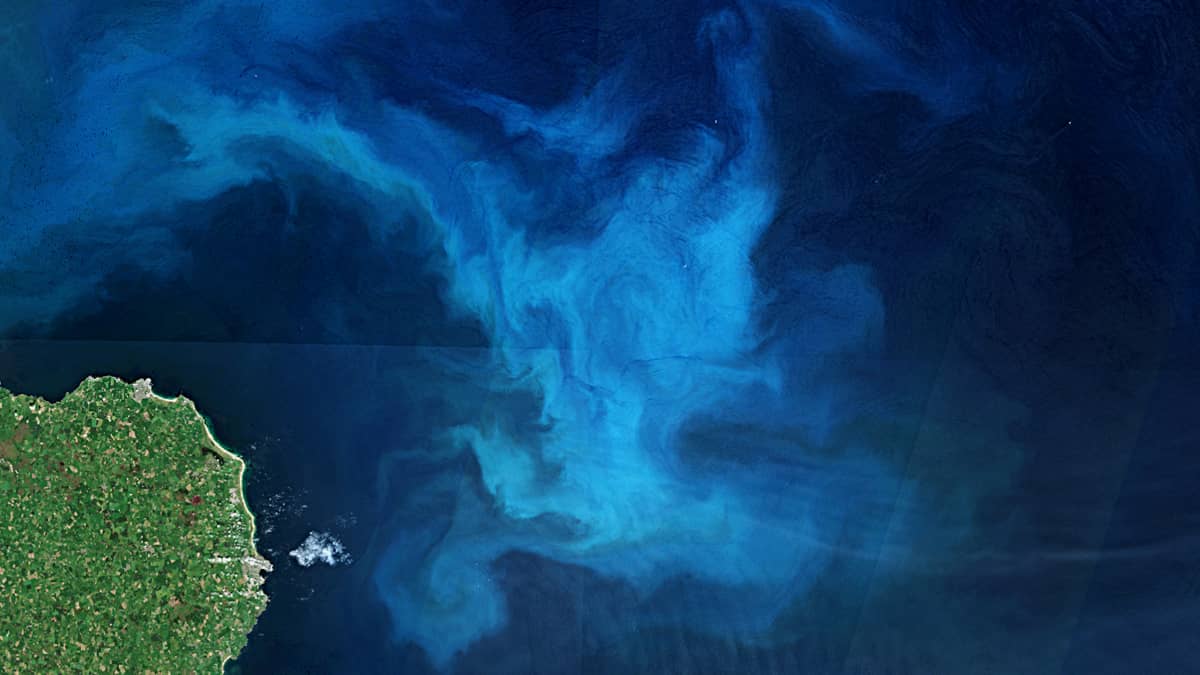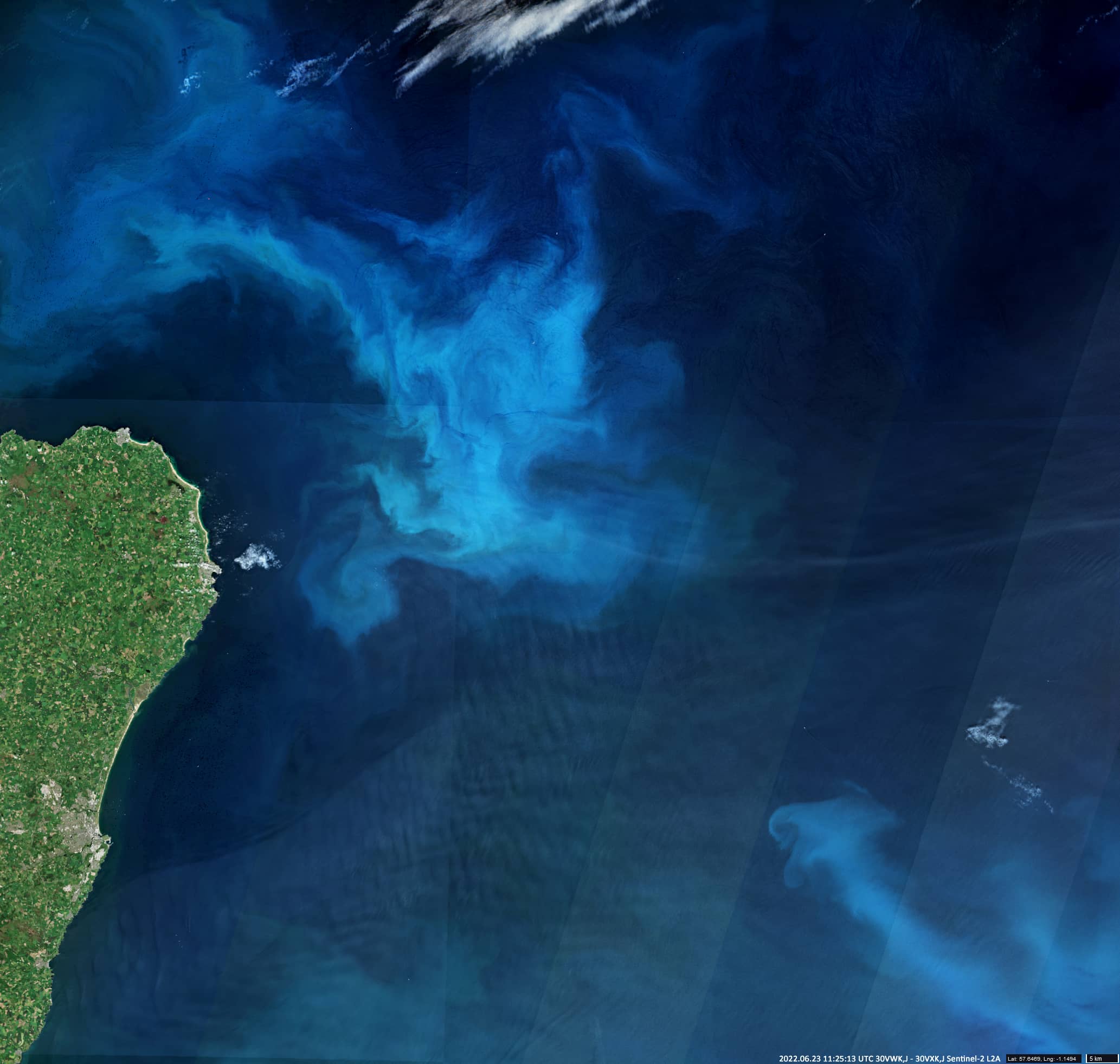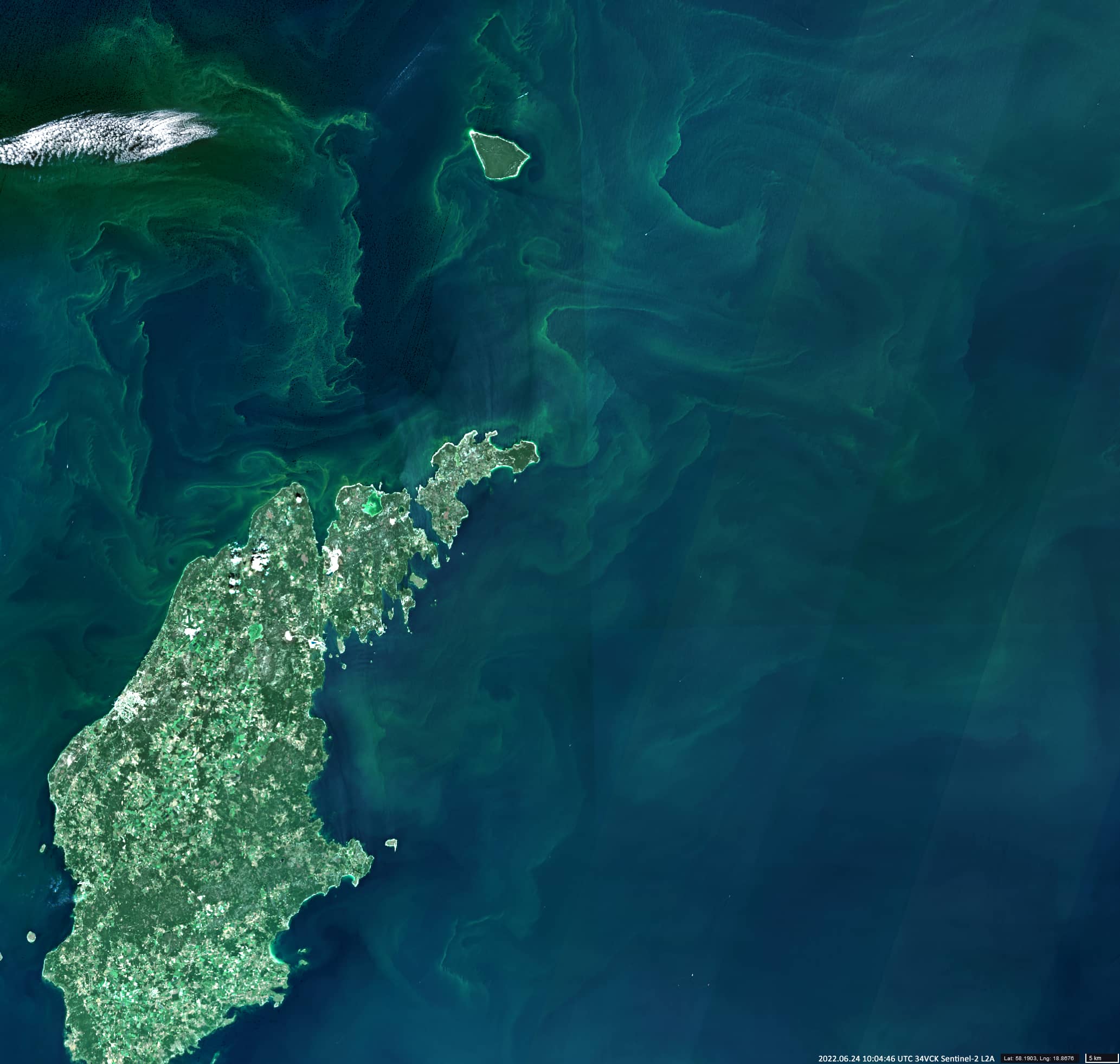
Algal and cyanobacteria blooms in the North and Baltic Seas
North Sea | East of Aberdeenshire
Baltic Sea | West of Gotland
Dates of acquisition:
June 23rd, 2022 | 11:25:13 UTC
June 24th, 2022 | 10:04:46 UTC
Sensor: Sentinel-2A,B L2A
Coordinates: ca. (58°N, 1°W), (58°N, 17°E)
The images show two different types of blooms which could be acquired in June by Sentinel-2A and B: a phytoplankton bloom in the North Sea east of Aberdeenshire and a cyanobacteria bloom in the Baltic Sea west of Gotland.
In late spring and early summer, sunlight and high levels of nutrients often trigger abundant phytoplankton blooms in the North Sea. Winds drive vertical and horizontal mixing of nutrients from deeper layers of the sea and from river runoff. Coccolithophores appear milky whereas diatoms and dinoflagellates appear green. Intense and vivid colours reveal high concentrations of phytoplankton.
Cyanobacteria are the first organisms known to have produced oxygen. They obtain energy through photosynthetic pigments and are also known as ‘blue-green algae’ (though botanically speaking, they are not algae).





